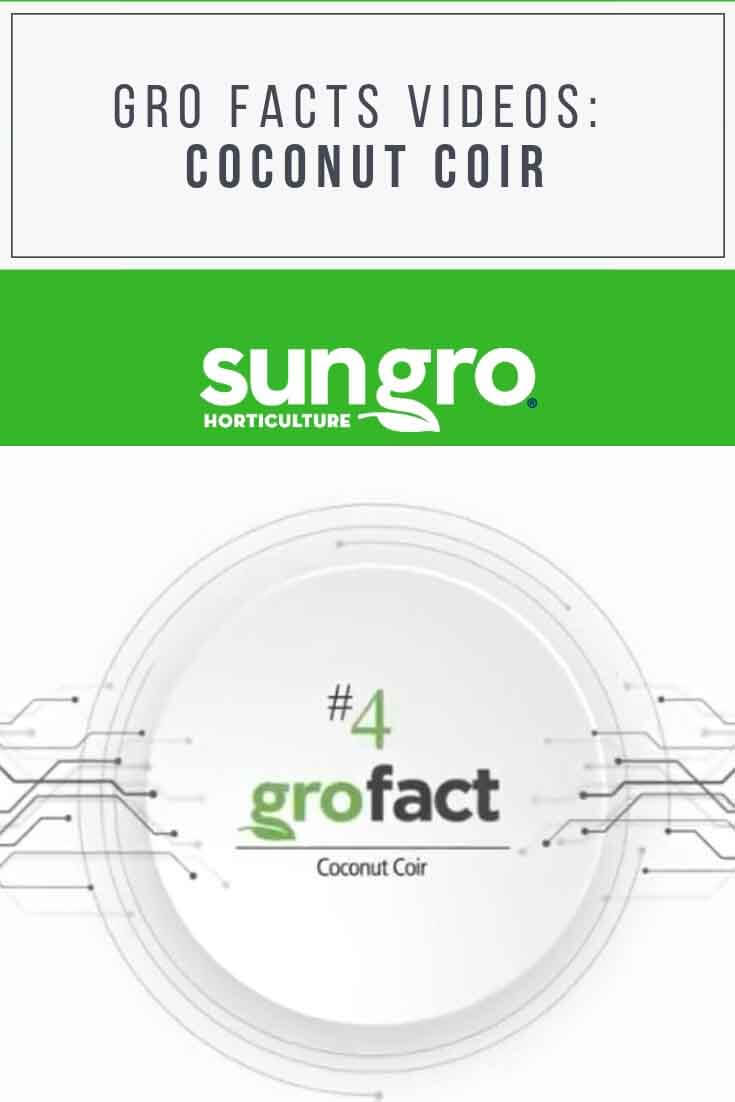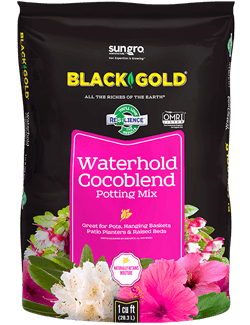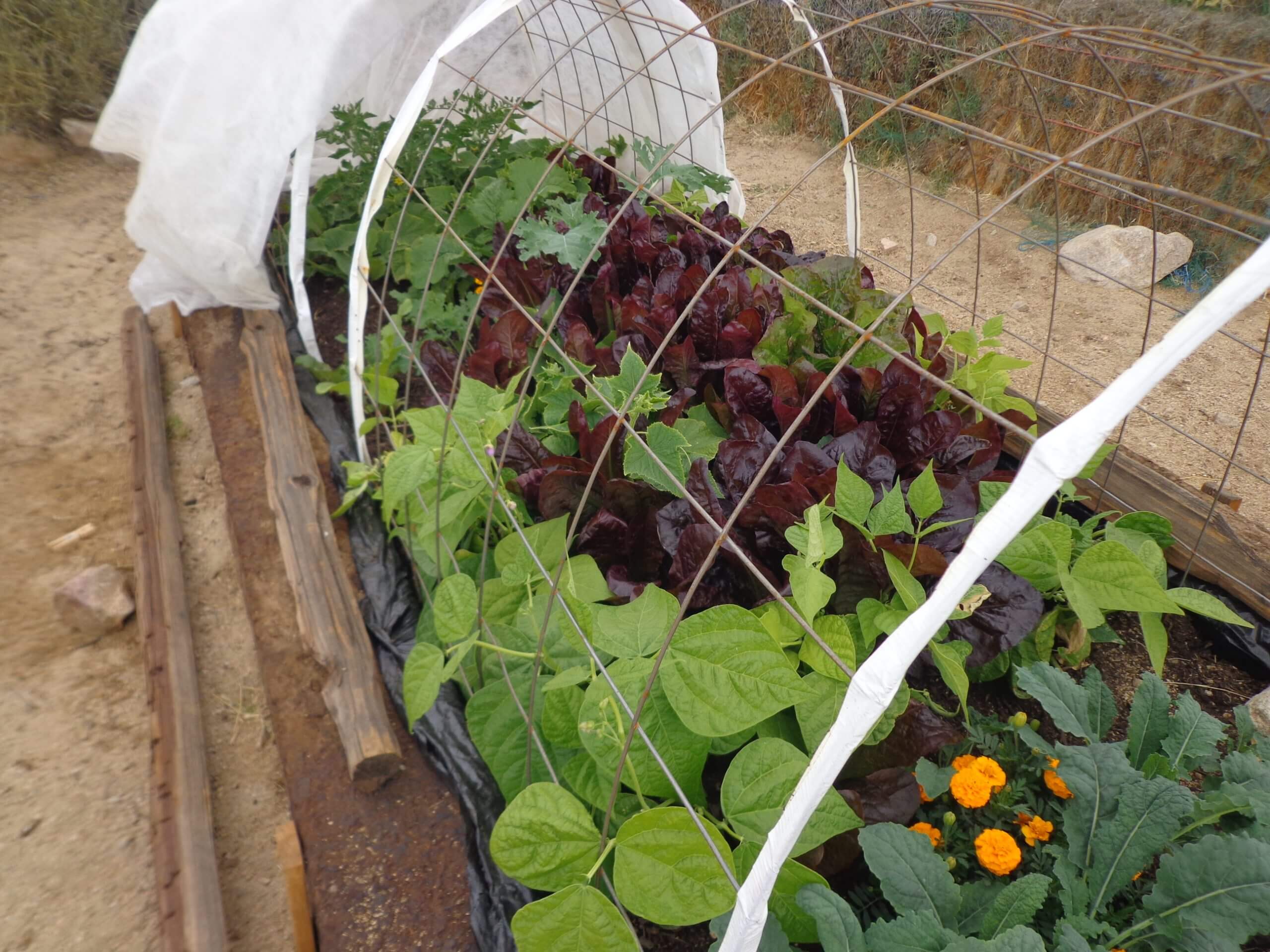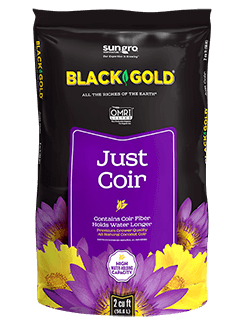
What is coconut coir and why is it used as an essential component of growing mixes? What are the characteristics of coconut coir? This video will tell you everything you need to know about this all-natural potting mix component.

What is coconut coir and why is it used as an essential component of growing mixes? What are the characteristics of coconut coir? This video will tell you everything you need to know about this all-natural potting mix component.
 My desert garden is the worst case scenario, and I like it that way. When I test plants and products for gardens, they go through the wringer…literally. I want to know how far I can push things before they fail.
My desert garden is the worst case scenario, and I like it that way. When I test plants and products for gardens, they go through the wringer…literally. I want to know how far I can push things before they fail.
When the dry wind blows up here in the high desert of southern California, it sucks every bit of moisture out of the soil surface. The real problem is called desiccation, which is the process of wind drawing moisture out of a living leaf. Under these conditions, there simply isn’t enough moisture in the root zone to replace what’s lost. Growth slows, leaf edges brown and plants fail to thrive.
I decided to try Black Gold Waterhold Cocoblend Potting Soil to see if it would offer plants more immediate moisture availability. Because my soil is so porous, I simply dug a hole, filled it with Cocoblend and planted tomatoes directly into the potting soil. Nearby I mixed compost and organic fertilizer into my desert ground, which is more like decomposed granite than real soil, and planted more tomatoes there. The test plant groups were no more than four feet apart.
Then came an unusual with cold gale force winds from dawn to dusk. My test took the full brunt of it. The plants in Cocoblend stood the desiccation easily. The others lost their bright green coloring and took on temporary wilt. Frankly, it amazed me that differences were so immediately apparent. And this repeated itself over and over when temperatures soared or more moderate wind blew for days. I could not help but attribute the difference to the coir in the aptly named Waterhold Cocoblend.
 Coir is a byproduct of coconut processing. It is the stringy brown fibers that composed the husk, and these are stripped off when coconuts are processed. When finely ground, this material is proving the most absorptive material available, and yet it won’t pack down over time to cause drainage problems. Best of all, it is recycled, not mined.
Coir is a byproduct of coconut processing. It is the stringy brown fibers that composed the husk, and these are stripped off when coconuts are processed. When finely ground, this material is proving the most absorptive material available, and yet it won’t pack down over time to cause drainage problems. Best of all, it is recycled, not mined.
What this told me is that Black Gold Waterhold Cocoblend Potting Soil is without question the best choice for raised beds in dry climates hot and cold. Somehow the absorbency of coir is so far beyond anything we’ve seen in the past that its revolutionizing the potting soil world. When used to fill raised beds, it is the best choice for sustainability because it is made from recycled material and helps to conserve water. Virtually every drop you apply to the garden will be absorbed and held ready for roots when they need it. Plus, it takes about twenty years for coir to decompose, so you can be sure it’s as viable today as it will be in the future.
The combination of coir and peat moss is biologically active because worm castings are part of the scientifically blended soil. Earth worms process natural soil into castings which are rich in slow release nutrients. They also contain a whole world of microbes which are introduced to this rich organic soil. Some microbes actually make plants more resistant to drought, promote more aggressive root development and improve disease resistance.
Whenever you create a vegetable garden in raised beds, you must fill it with soil. There are many choices available in a wide range of prices. But remember this: You get one chance to fill those beds, and selecting poor, low cost soil means you start off lacking in water holding potential, microbial activity and nutrient loads from day one. That’s a serious problem out west in our hot, rainless, dry environment. You’ll be always running to catch up. That’s no real savings.
Since its launch in 2003, Black Gold® Waterhold Cocoblend (formerly just Cocoblend) became a popular product with those gardeners seeking a superior water retentive potting soil. To better reflect the product, we have changed the name and bag image to better focus on the benefits of this great OMRI Listed mix ideal for organic container gardening.
Waterhold Cocoblend combines coconut coir with Canadian Sphagnum Peat Moss to give your outdoor container plants the best water retention protection against exposure to heat, wind and sun. We at Sun Gro Horticulture use the same high-quality ingredients in this mix that we use in our professional grow mixes. We’ve done all the work for you. And we don’t stop there; we also add earthworm castings and pumice to make this a high-performance potting soil for all container applications.
One of the most popular features of Waterhold Cocoblend is all of the great water-holding traits you would get in traditional water-holding potting soil, but no copolymer crystals (polyacrylamide), sometimes referred to as the “ooze from beneath”. Black Gold Waterhold Cocoblend is an organic alternative to what you might typically find. This product is OMRI Listed, which means you don’t have to hope the manufacturer meant well when they made their product. All of Black Gold® Waterhold Cocoblend‘s raw ingredients and manufacturing processes have been reviewed by the Organic Materials Review Institute. The end result is that Black Gold® Waterhold Cocoblend is suitable for producing a certified organic garden. Think of OMRI as the “Good Housekeeping Seal of Approval” for organic production. At Black Gold we insist our organic products are OMRI Listed so gardeners can garden with confidence.
You should not think of Black Gold Waterhold Cocoblend as a specialty potting soil, but as an all purpose potting soil with an additional feature: increased water retention. As we all know gardening can bring us a lot of enjoyment, but it can also increase your workload. With Black Gold Waterhold Cocoblend your “To Do” list can be reduced since you will need to water your outdoor containers and baskets less when you use it. Black Gold Waterhold Cocoblend may have a new name, but it’s the same premium quality potting soil that will help reduce the frequency of watering your outdoor containers and baskets.
 At Sun Gro®, the makers of Black Gold®, we are very focused on producing a quality product. This is evident in the choice of coconut coir used in our potting soils. What exactly is coconut coir? It is the coarse fiber taken from the fibrous outer shell of a coconut. It used to be considered a waste products but more recently it has become processed for horticultural use. Coconut coir comes in many forms, depending on the degree in which it has been processed. For our Black Gold® Just Coir and Waterhold Cocoblend products, we use only the best horticultural coir.
At Sun Gro®, the makers of Black Gold®, we are very focused on producing a quality product. This is evident in the choice of coconut coir used in our potting soils. What exactly is coconut coir? It is the coarse fiber taken from the fibrous outer shell of a coconut. It used to be considered a waste products but more recently it has become processed for horticultural use. Coconut coir comes in many forms, depending on the degree in which it has been processed. For our Black Gold® Just Coir and Waterhold Cocoblend products, we use only the best horticultural coir.
In all of our coir mixes, we add a form of coconut coir that has been expanded from compressed coir bricks. The final product of this expansion process is a finer organic substrate similar to peat moss. And like all of the raw materials added to Black Gold products, our coir has undergone stringent assessments for quality control. All raw materials, including coconut coir, are pre-qualified before they are used in any of our products. Our team of research horticulturalists are responsible for developing our high-quality standards and then securing products that pass those standards.
Coconut coir is produced all over the world. India and Sri Lanka account for the majority of the coconut coir produced. Just like many other products, the quality of coconut coir varies depending on where it is produced and how it is processed. The most important concern Sun Gro has when it comes to sourcing coconut coir is the level of salts it contains. A large portion of coconut coir is grown near the ocean. Between the natural salts in the soil and the salt from ocean spray, coconut coir sourced from coconut farms near the ocean have high salts. When high salt coconut coir is used, then the potting soil and the plants grown in it are negatively impacted. The affected plants can have stunted root and shoot growth, tip die back of new growth, and dead or brown sections on the edges of older leaves. These undesirable traits are completely avoidable if low salt coir is chosen.
 Sun Gro sources its coconut coir from inland coconut farms that have rigid production processes, which include washing the salts out of the coconut coir at the source. The manufacturer is required to test and ship only the coconut coir that passes Sun Gro’s quality specifications. When the coconut coir arrives and we begin the expansion process, we wash it one more time and test it to ensure it meets or exceeds our quality standards. The goal is to provide coconut coir that provides the wonderful horticultural traits we desire without the high salts.
Sun Gro sources its coconut coir from inland coconut farms that have rigid production processes, which include washing the salts out of the coconut coir at the source. The manufacturer is required to test and ship only the coconut coir that passes Sun Gro’s quality specifications. When the coconut coir arrives and we begin the expansion process, we wash it one more time and test it to ensure it meets or exceeds our quality standards. The goal is to provide coconut coir that provides the wonderful horticultural traits we desire without the high salts.
Why do we go through all of these additional steps? Because Sun Gro is a horticultural company not a marketing company. Our desire is to have lifelong customers, and we believe the easiest way to make that a reality is to produce a consistently high-quality product, so that you have gardening success every time you use our products.